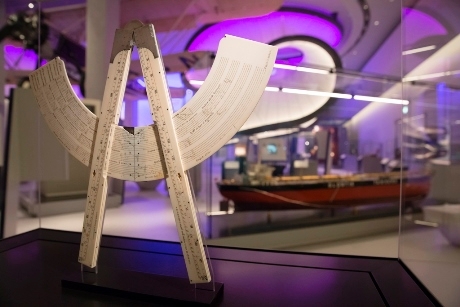
Mathematics: The Winton Gallery is a new exhibition that’s just opened at the Science Museum in London to highlight the central role of Maths in our day to day lives.
Mathematics: The Winton Gallery brings together stories, historical artefacts and design to highlight the important role of mathematical practice in the lives of all humans.
It also explores how mathematicians, their tools and ideas have helped build the modern world over the past four centuries.
School groups visiting the gallery can see more than 100 objects taken from the Science Museum’s Science, Technology, Engineering and Mathematics collections.
The artefacts are said to have been selected to tell stories about how mathematics has shaped, and been shaped by, some of the most important human concerns, from trade and travel to war, peace, life, death, and beauty.
Exhibition highlights
Positioned at the centre of the gallery is the Handley Page ‘Gugnunc’ aeroplane, built in 1929 for a competition to construct safe aircraft.
Aerodynamic research is said to have influenced the wing design of this experimental aeroplane, and helped to shift public opinion about the safety of flying.
This aeroplane will immerse students in the gallery’s overarching theme, and help illustrate how mathematical practice has helped solve real-world problems – and in this instance, paved the way for the safe passenger flights that we rely on today.
School groups can also learn from the various instruments and objects within the gallery; some clearly reference their mathematical origin while others might appear rooted in other disciplines, from classical architecture to furniture design.
Examples of artefacts on display include a box of glass eyes used by Francis Galton in his 1884 Anthropometric Laboratory to help measure the physical characteristics of the British public, and a Wisard pattern-recognition machine built in 1981 to attempt to re-create the ‘neural networks’ of the brain.
Mathematics: The Winton Gallery is free to visit and open daily.
School travel organisers should visit www.sciencemuseum.org.uk/mathematics for further information.
Pictured: Architectonic sector by George Adams, 1770. (Photo credit: Jody Kingzett).










